
Enchanted gardens with phenomenal lilac fragrance in spring. What better way to break the flower fast of winter?
Knowing how and when to prune your lilacs will give you brilliant blooms year after year.
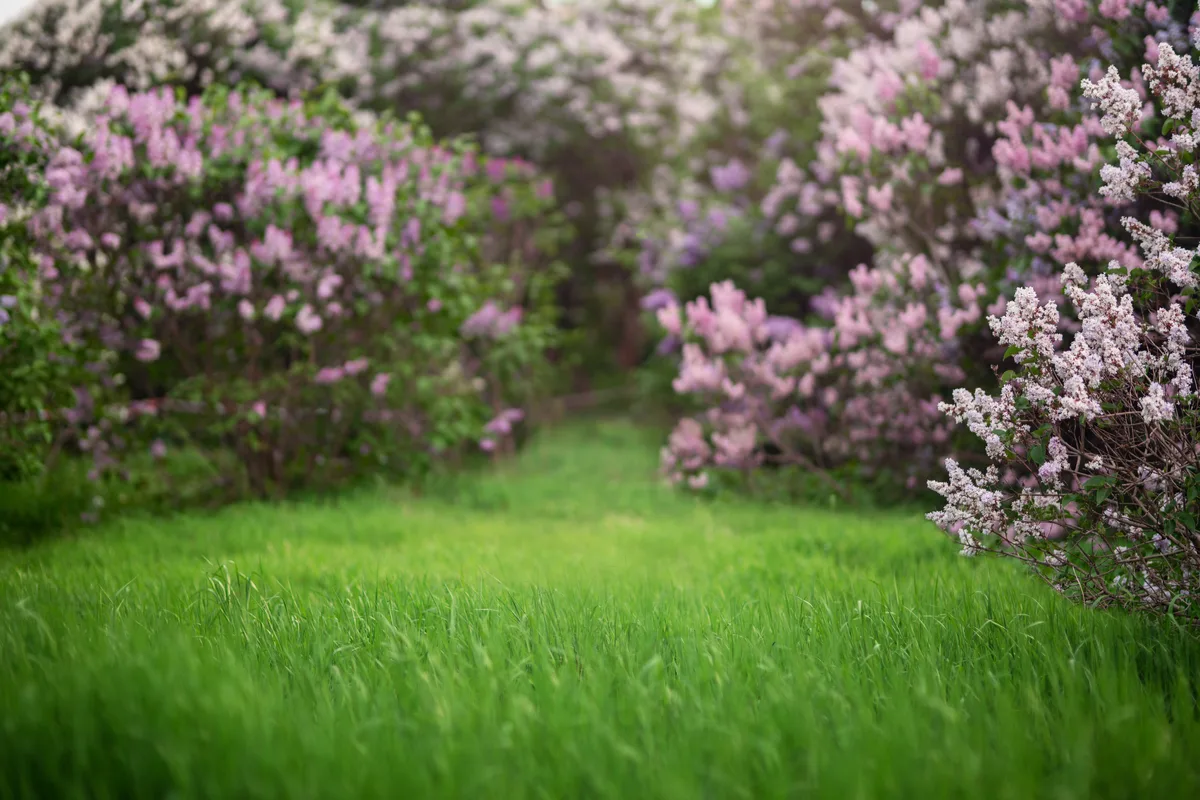
They grow moderately slowly with the best performance in full sun in rich neutral to alkaline soils.
While these delightful shrubs take a few years to get going, they reliably produce lavish lilac plumes for years, sometimes generations.
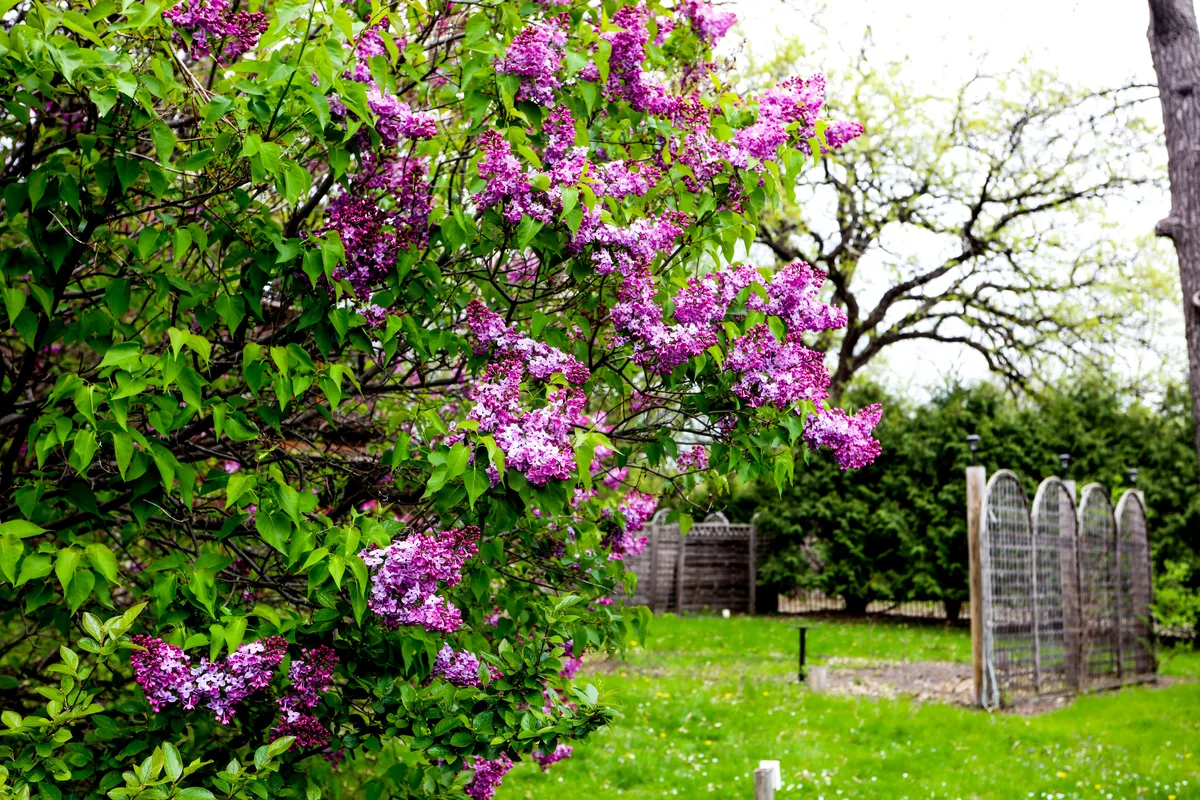
Even left alone, lilacs will perform their seasonal fragrance festival, however, there are some tricks to maximize bloom output.
The Sweetness of Spring
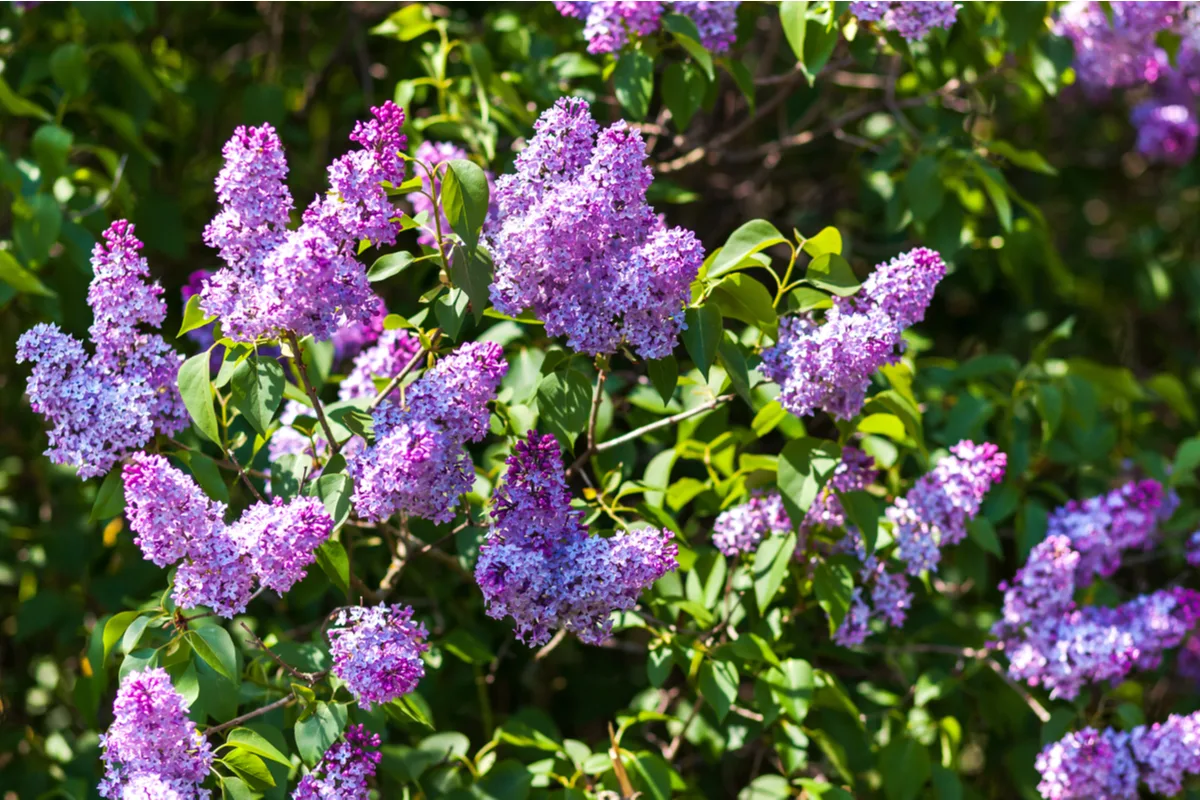
Lilacs are a historically delightful, multi-stemmed shrub that blooms early in spring on last year’s wood.
This means that lilacs start forming next year’s flowers right after their luscious fragrant panicles of picture-perfect blossoms start to fade.
Hot Tip* Only prune lilacs right after they bloom to avoid removing next year’s blossoming fragrance festival.
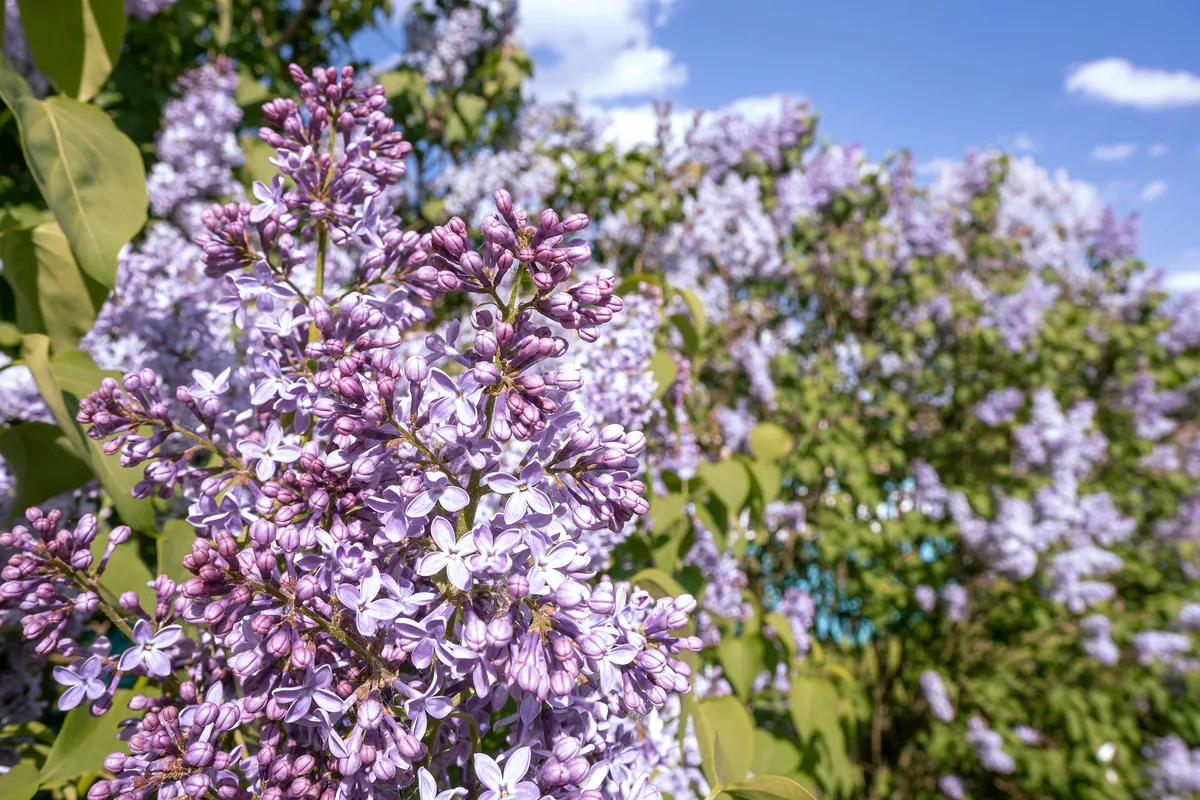
Many things can affect lilacs’ spring-blooming such as weather, moisture, and plant and soil health. Keeping these in mind while protecting next year’s buds through summer and fall will yield masses of enchanting lilac flowers.
Lilac Pruning Step #1:
With a pair of pruners, harvest lilac panicles for gorgeous bouquets and crafts. Cut lilac stems right above the next non-blooming set of leaves. Next year, each of those shoots will burst into bloom.
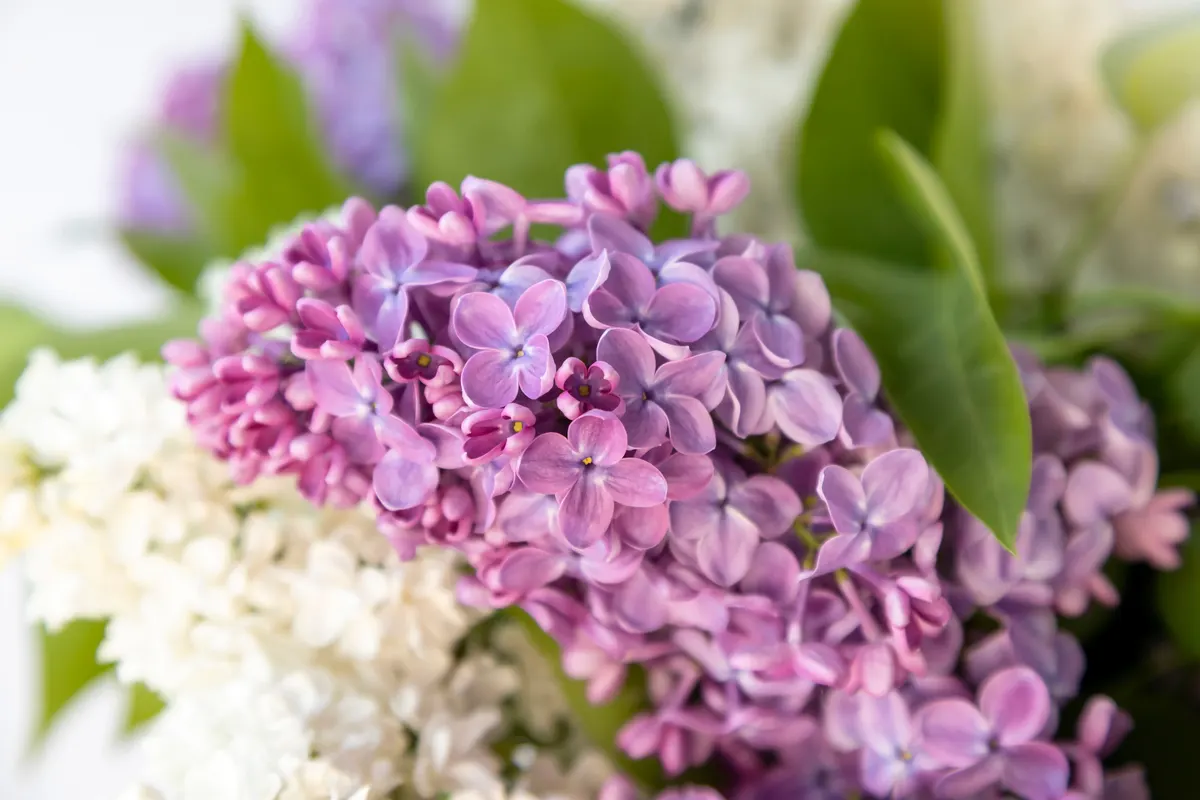
Spring’s Bountiful Harvest
Bring spring inside with bushels of fragrant lilac sprays.
Not only will you fill every vase you own, but you will also motivate your lilac to give you even more flowers next year!

How To Make Your Lilac Bouquets Last
- Choose panicles that have ¾ of the blooms open.
- Harvest in the cool early morning and place directly in cool, fresh clean water.
- Remove all leaves. If you want the leaves for greenery in your bouquet, just separate them from the blooming stems.
- Lilac bouquets will fade in hot direct sunlight, so place them in a cool area out of direct light.
More Lilac Flower Uses
Lilac flowers are surprisingly edible and carry a host of medicinal benefits too.
The enticing lilac fragrance can be imparted in tea or infused in honey, oil, or vinegar for next-level elegance.
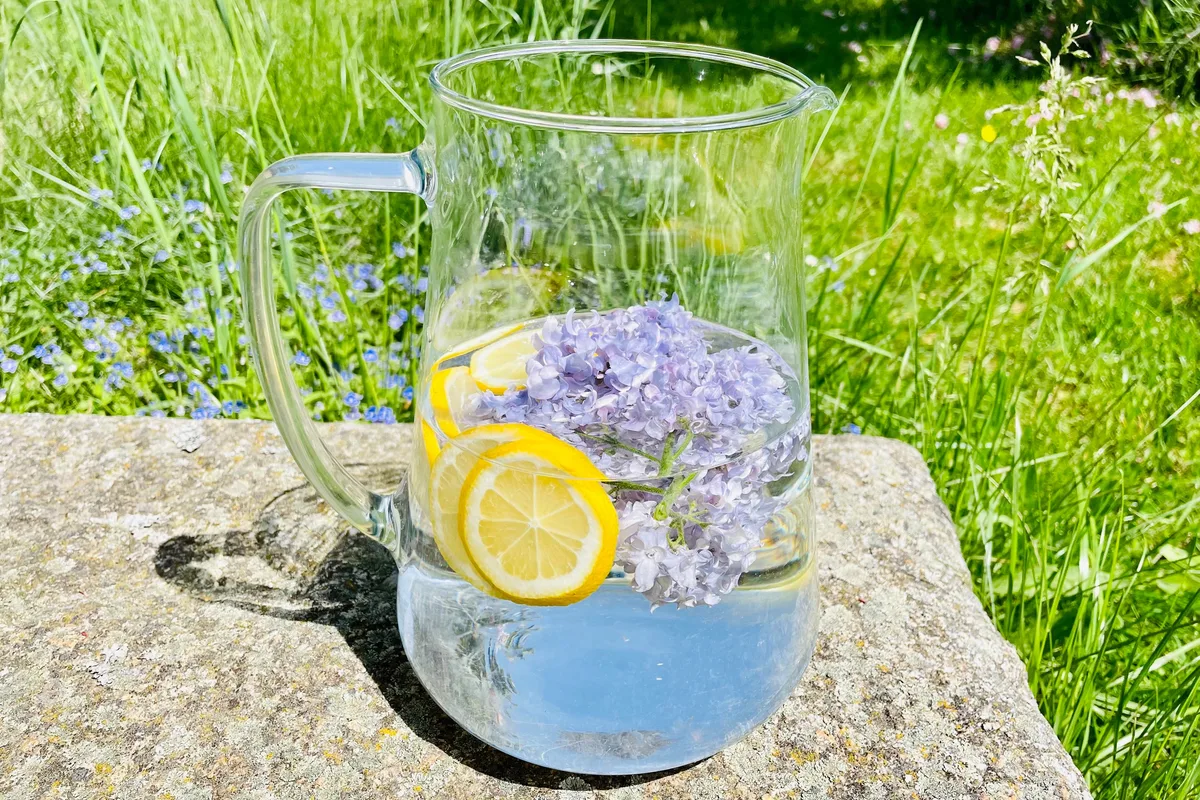
The tiny, immaculate lilac flowers, methodically removed from stems, dry beautifully for salad or dessert decorating.
The flowers maintain their color and fragrance if dried in a cool, dark place with excellent air circulation.
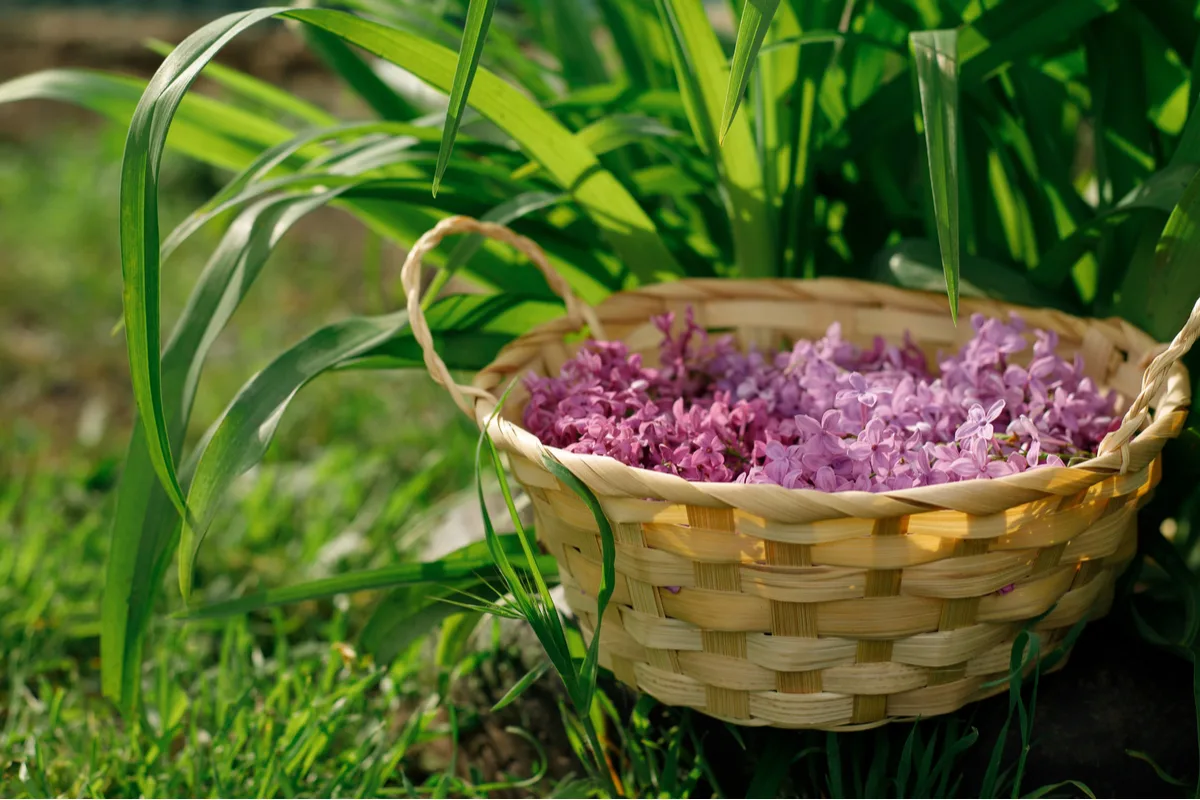
Used in skincare, lilac water imparts an uplifting floral aroma which may reduce inflammation and minimize signs of fine lines.
Lilac Pruning Step #2:
Prune out old wood thicker than 2 inches in diameter.
Old, thick wood becomes less productive. Pruning it out encourages vigorous shoots for big, bountiful blooms. Lilac wood is tough. Use loppers or a hand saw to lighten the task.
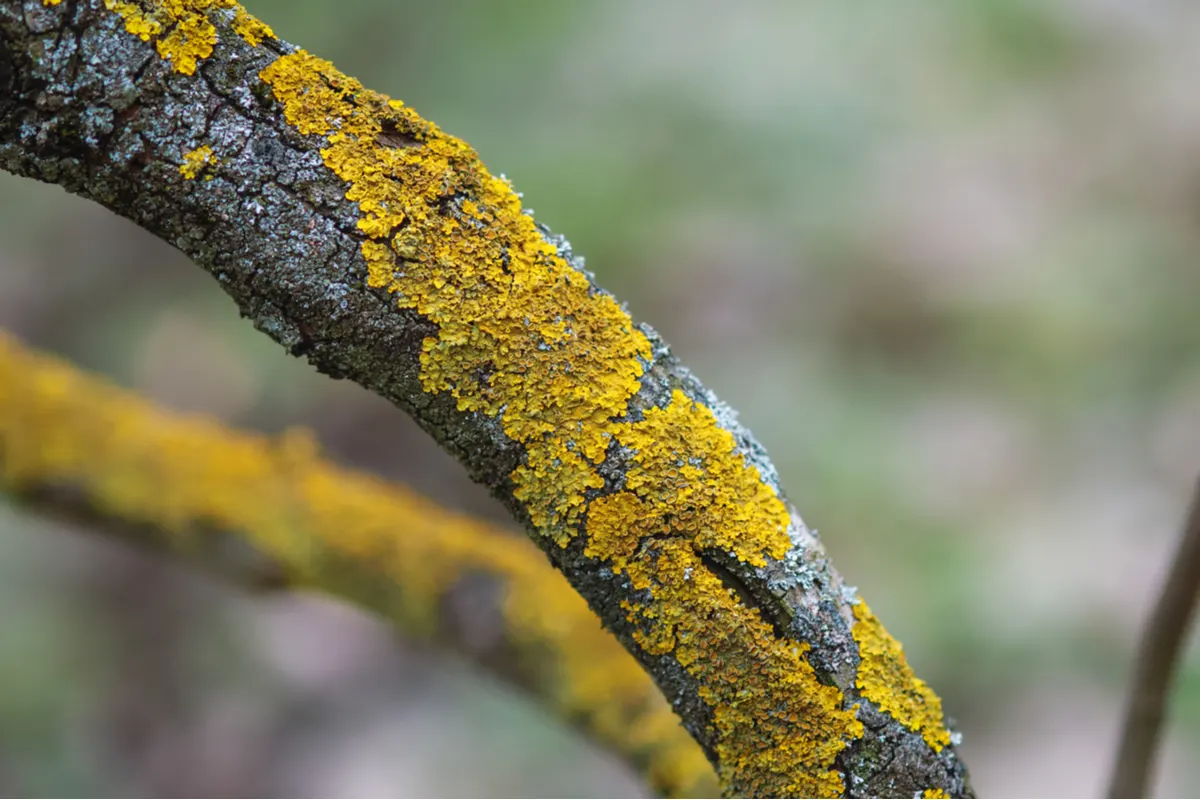
A Modern Take on A Historical Favorite
Through decades of dedicated breeding, many lilac cultivars grow to a polite compact size and shape.
These robust shrubs are found throughout suburban and urban landscapes and tend to be easier to maintain.
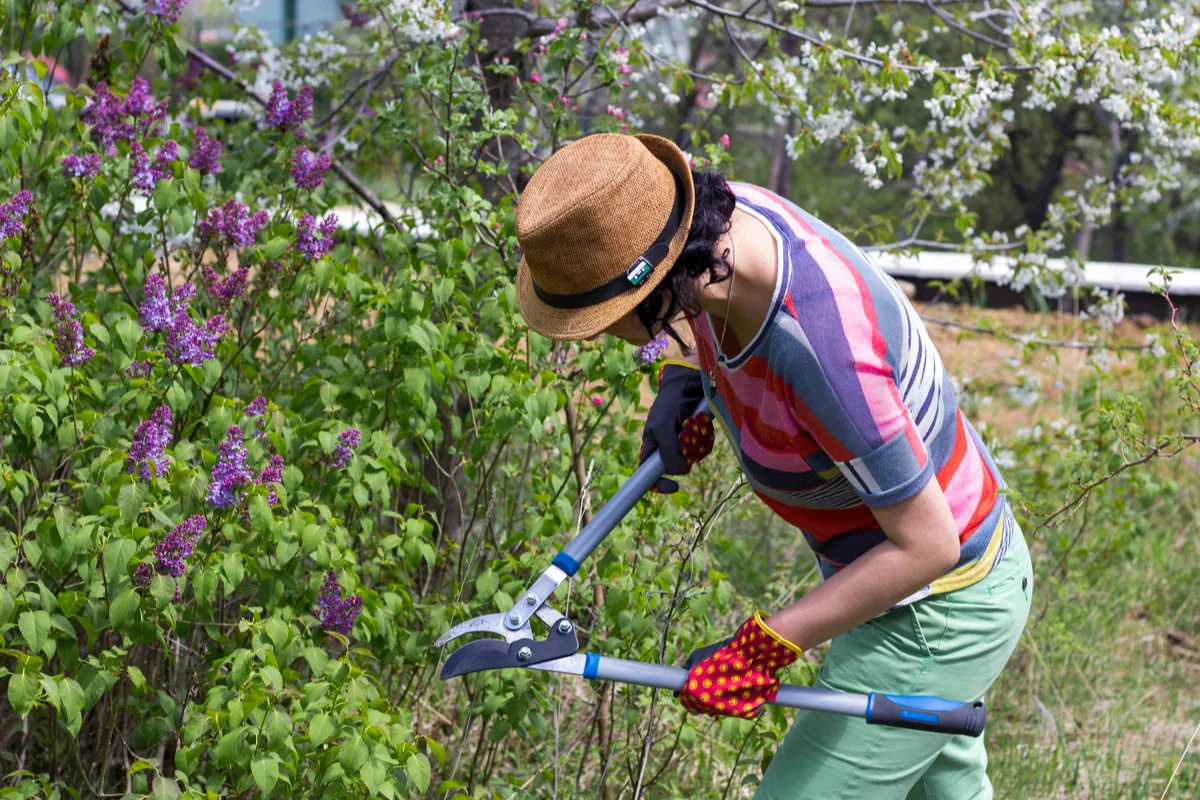
Most lilac varieties, however, have strong suckering habits, a benefit for filling in space and for propagating more lilac shrubs.
Regardless of the lilac variety, young shoots ½ to ¾ of an inch thick tend to be the most productive.
Lilac Pruning Step #3:
Observe your shrub from all vantage points. Prune out any diseased, dead, or damaged wood. To improve airflow, remove any remaining faded flowers along with spindly, unproductive shoots. Look for inward crossing branches and remove them to allow outward facing branches to grow unimpeded.
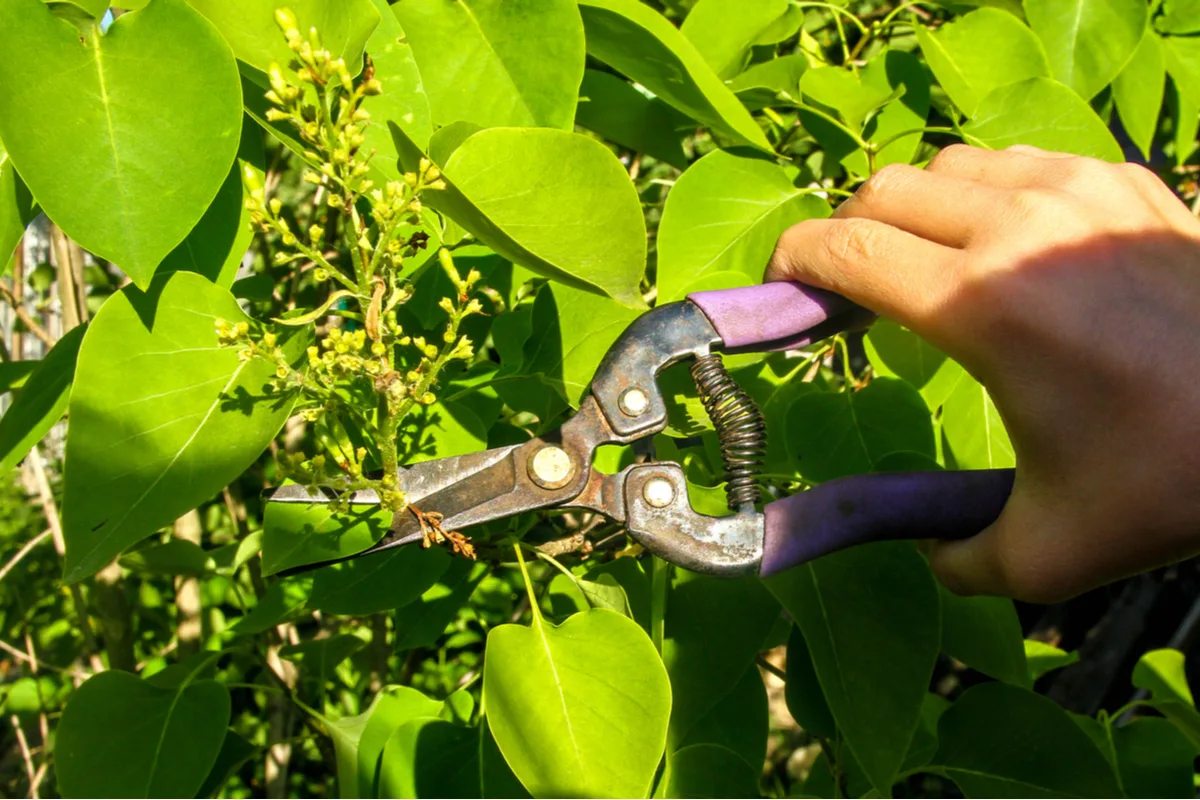
Pruning Lilacs – Annual Maintenance
Lilacs have a slow to medium growth rate and usually won’t require any pruning in the first 3 to 4 years while they become established.
Even after all the bouquets of fragrant lilac sprays, there might still be some flowers remaining.
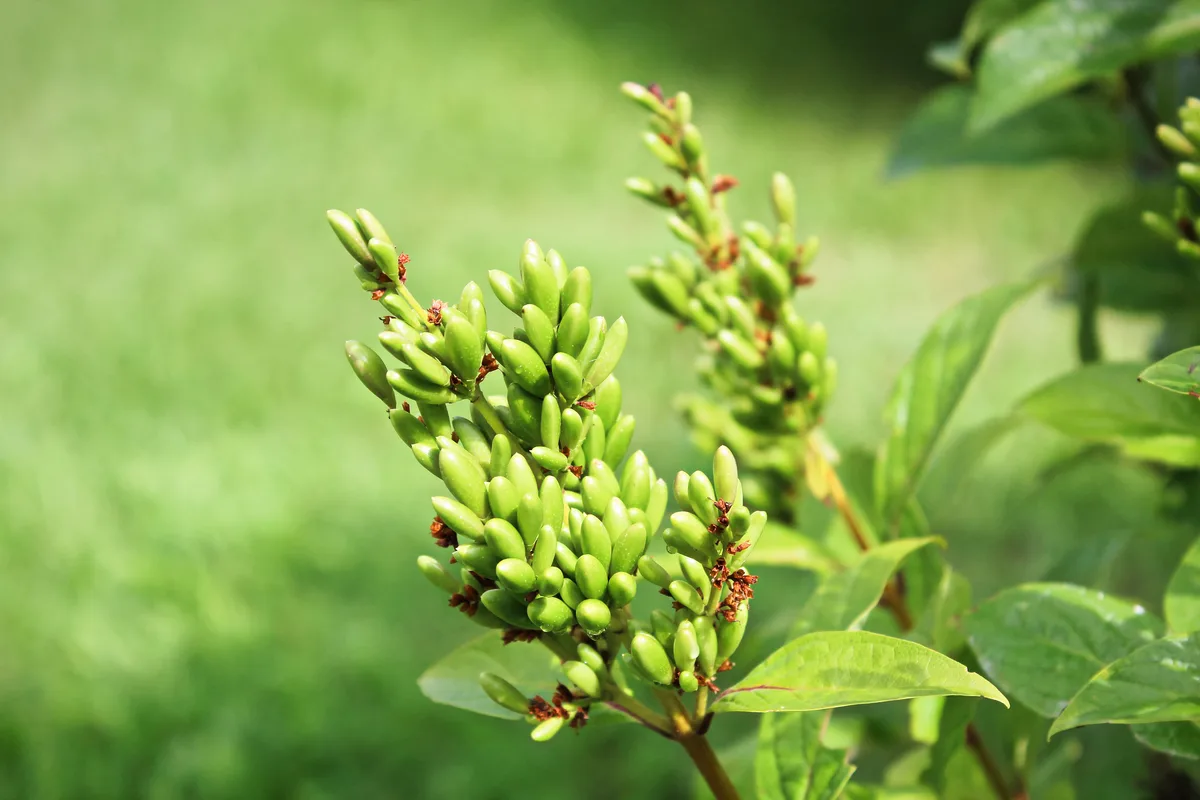
You might choose to remove any remaining faded lilac flowers. This will improve air circulation and direct the plant’s energy to next year’s buds.
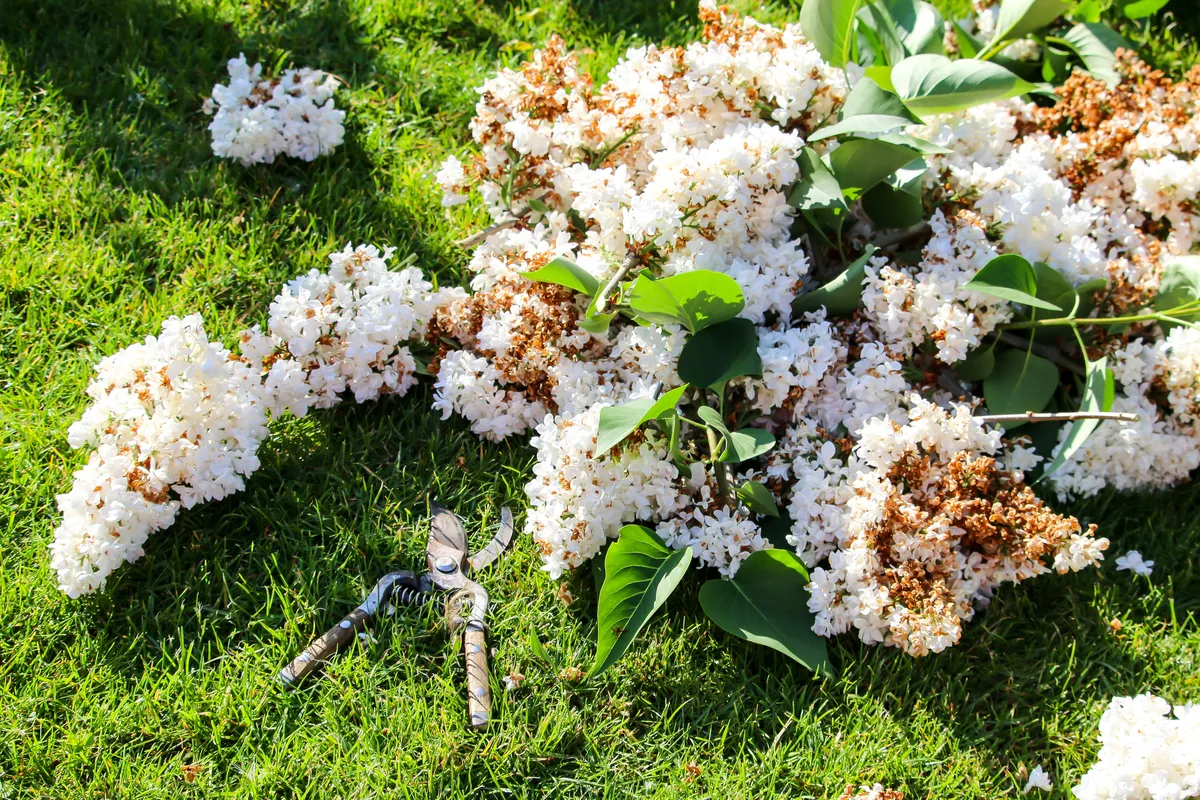
Do your maintenance pruning as soon as the flowers have finished.
This is also the best time to shape your lilac shrub and reduce the size by no more than 1/3 if desired.
How To Rejuvenate An Old Lilac Shrub
A favorite long-lived shrub, the common lilac (Syringa vulgaris) has a lifespan of over 100 years.
You may find overgrown forgotten lilac hedges at the edge of an overgrown field. A timeless commemoration of the long-since vanished farmhouse and the generations that may have lived there.

Older lilacs tend to be productive just at the outer tips of branches with lots of dead or damaged wood inside the plants’ structure.
Tackling one of these giant 20- or 30-foot shrubs will take some serious contemplation!
There are three courses of action to choose in this situation.
- Let it be. If the lilac is not a danger or in the way, you might allow it to continue its annual flower festival.
- Undertake an archeological pruning. Exposing the rich, old, twisted branches is a labor of love that could bring new life to one of these historic lilacs finds.
- Prune back the massive shrub. The shrub pruning rule is to only remove 1/3 of a shrub at a time. Rejuvenating the lilac to its formal glory may take a few seasons but you may have an established meaningful garden asset in the future.
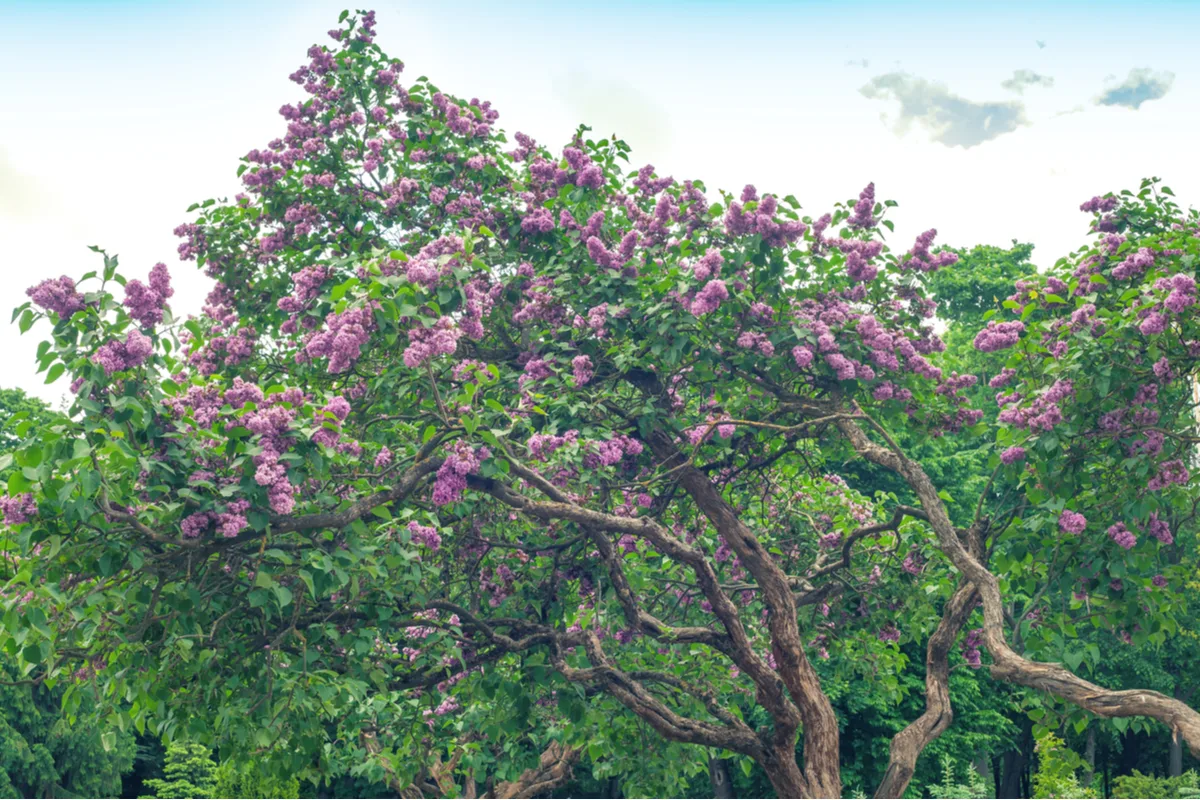
Even if you are blessed with your own lilacs, make sure to look for a lavish and luxurious lilac festival near you.
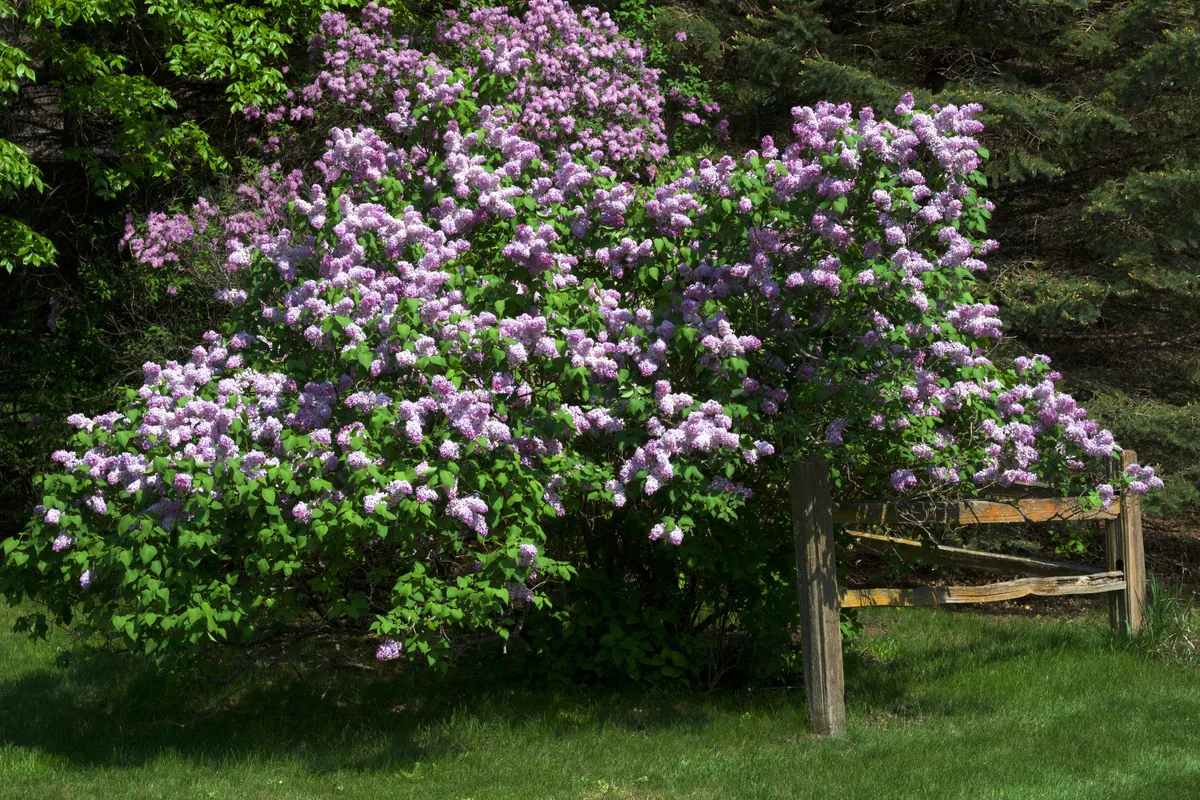
2022 is the National Garden Bureau’s Year of the Lilac. Celebrate this spring’s lavishly scented lilacs.
